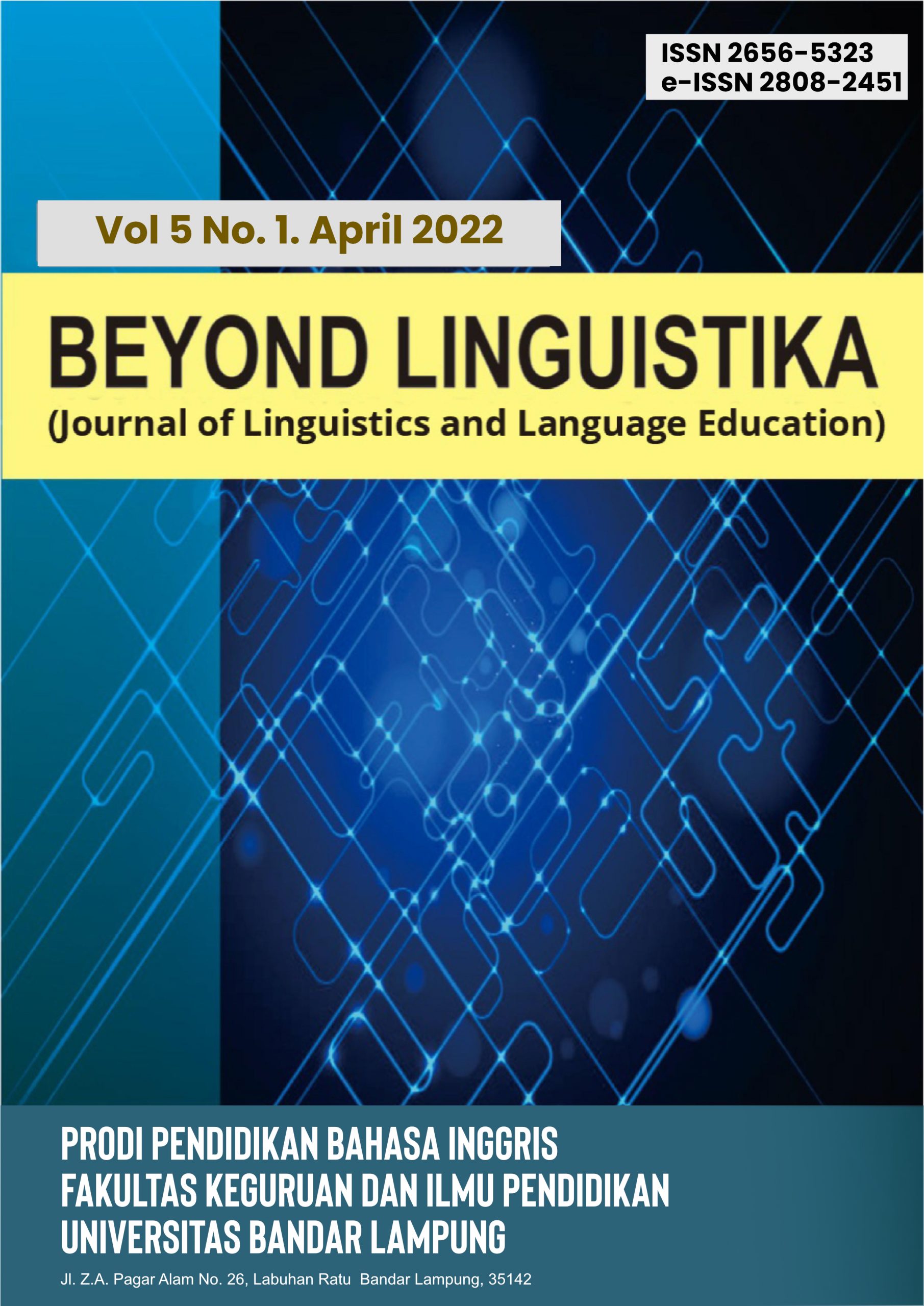AN ANALYSIS OF THE FIRST LANGUAGE ACQUISITION AT THE TELEGRAPHIC STAGE
Abstract
Keywords
Full Text:
PDFReferences
Bakri. (2003). Metodologi Penelitian
Kualitatif. Surabaya: Vidipres Offest
Bolinger, D. (2002). Aspect of Language.
Second Edition. America: Harcourt
Brace Jovanovich. Inc.
Chaer, A. (2013). Psikolinguistik: Kajian
Teoretik. Jakarta: Rineka Cipta
Chomsky, N. (1965). Aspects of the Theory of
Syntax. The Massachusetts Institute of
Technology. MIT Press.
Chomsky, N. (2009). Cartesian Linguistics:
A Chapter in the History of Rationalist
Thought. Third Edition. America:
Cambridge University Press
Fromkin, V. (1983). An Introduction to
Language. Third Edition. New York.
CBS College Publishing
Hutahuruk, B. S. (2015). Children First
Language Acquisition at Age 1-3 Years
Old In Balata. Retrived: 10 July 2020,
from IOSR Journal of Humanities and
Social Science (IOSR-JHSS) Volume
, Issue 8, Ver. V (Aug. 2015), PP 51-
Piaget, J. (1978). Piaget's theory of
intelligence. Englewood Cliffs, NJ:
Prentice Hall.
Langacker, Ronald W. (1973). Language and
its Structure: Some Fundamental
Linguistics Concepts. Second Edition.
America: Harcourt Brace Jovanovich,
Inc.
Miles, M. B., & Huberman, A. M.
(1994). Qualitative data analysis: An
expanded sourcebook. sage.
Miles, M. B., Huberman, A. M., & Saldaña,
J. (2014). Qualitative data analysis: A
methods sourcebook. 3rd.
Patton, M. (2002). Qualitative Research &
Evaluation Methods 3 Editions :SAGE.
Retrieved from:
https://us.sagepub.com/enus/nam/quali
tative-research-evaluationmethods/book232962
Ratnaningsih, E. (2017). An Analysis of the
First Language Acquisition: A Two
Years Girl. Ahmad Dahlan Journal of
English Studies, 4(1), 8.
Rezeki, T. I., & Sagala, R. W. (2020).
Semantic Analysis of Language
Acquisition in Three Years Old
Child. Jurnal Serunai Bahasa
Inggris, 12(2), 75-79.
Sagala, R.W. (2019). Language Acquistion
Pada Anak Periode Linguistik.
Serunai: Jurnal ilmiah Ilmu
Pendidikan, 5 (1), 84-89
Steinberg, Danny D. (2003)
Psycholinguistics: Language, Mind and
World. America: Longman Inc.
Varshney, Radhey L. (2003). An
Introductory Textbook of Linguistics &
Phonetics. India: Student Store.
Yule, G. (1996). Pragmatics. New York:
Oxford University Press.
DOI: http://dx.doi.org/10.36448/bl.v6i1.3345
Refbacks
- There are currently no refbacks.















